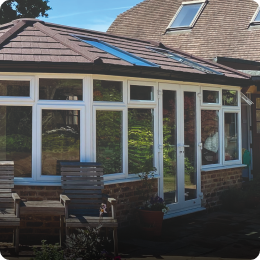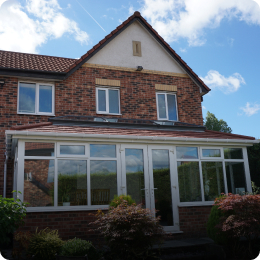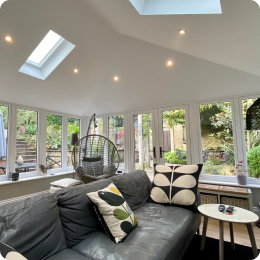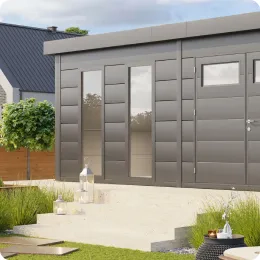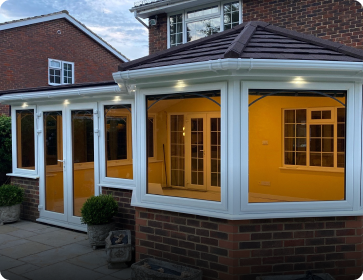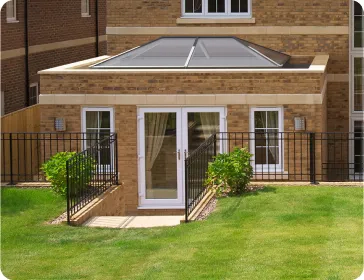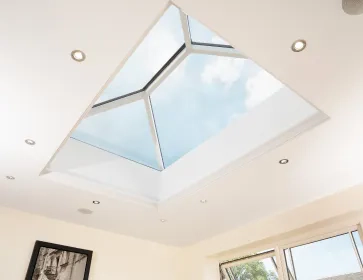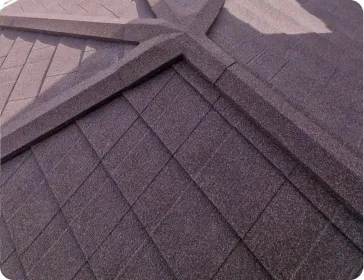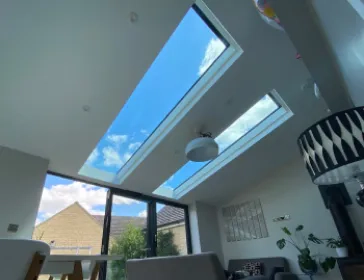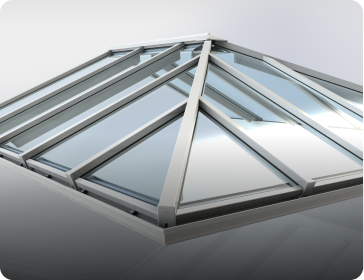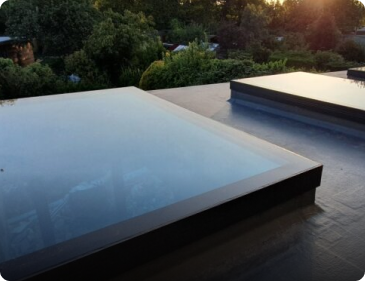
- Introduction
- What is a Conservatory?
- What is an Orangery?
- What is a Home Extension?
- Orangery vs. Conservatory vs. Extension: A Quick Comparison
- Orangery vs. Conservatory vs. Extension: A Detailed Comparison
- Tips for Choosing the Right Option
- The Benefits of SupaLite Products
- Case Studies and Real-Life Examples
- Quick Comparison Table
In today’s ever-evolving housing market, maximising the potential of your home is more important than ever. Whether you’re seeking a versatile space for relaxation, a stylish addition to your home, or a functional extension that adds lasting value, adding space to your home can dramatically enhance both your lifestyle and property value.
But when it comes to expanding your living space, the choice between an orangery, conservatory, or extension can feel a little confusing and overwhelming. Each option boasts its own unique charm, benefits, and aesthetic appeal, but the key question remains: which one is right for you?
We’ll explore the key differences between orangeries, conservatories, and extensions, helping you make an informed decision that suits your lifestyle and home.
What is a Conservatory?
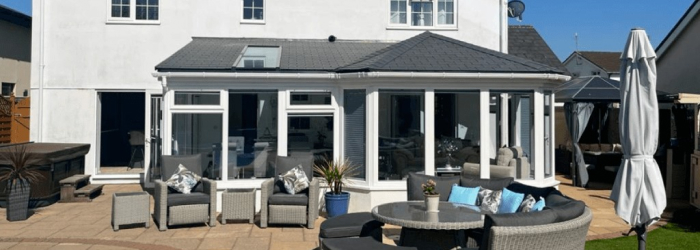
A conservatory is a beautiful addition to any home, designed to bring the outdoors in. Characterised by its extensive use of glass, a conservatory allows an abundance of natural light, creating a bright and inviting space, perfect for enjoying your garden from the comfort of your home. Conservatories are typically attached to one side of a house, offering a seamless extension of your living space that can serve multiple purposes, from a sunroom to a casual dining area or even a greenhouse.
Key Characteristics:
- Structure: Typically made of a glass roof and walls, traditionally covering at least 50% of the total area, offering a panoramic view of the outdoors.
- Connection: Often attached to the side of the house, seamlessly extending the living space.
- Function: Commonly used as a sunroom, greenhouse, or leisure area.
Advantages of Conservatories
1. Natural Light:
The primary allure of a conservatory is the natural light it brings into your home. Whether you’re reading a book or sipping tea, the glass structure creates a serene atmosphere that enhances any activity. The open design not only brightens your living space but also provides a beautiful view of your garden, making it an ideal spot for relaxation and entertainment.
2. Affordability:
Conservatories are generally more affordable than other options like orangeries and extensions. They provide a budget-friendly way to add extra space to your home.
3. Quick Installation:
Compared to other building projects, conservatories can be installed relatively quickly, causing minimal disruption to your daily life. This makes them an attractive option for homeowners looking to expand their living space without lengthy construction times.
4. Versatility:
Use it as a dining area, a plant haven, or a cosy retreat. The versatility of a conservatory means you can tailor it to your needs.
5. Modern Enhancements with SupaLite Roof:
Unlike traditional glass or polycarbonate roofs, the SupaLite tiled roof offers enhanced insulation and energy efficiency to conservatories. It requires minimal maintenance, ensuring your conservatory remains a comfortable and cost-effective addition to your home. A tiled conservatory roof not only improves thermal efficiency but also reduces glare and noise, providing a more comfortable living environment year-round.
Disadvantages of Conservatories
1. Temperature Fluctuations:
Traditional conservatories can become too hot in the summer and too cold in the winter due to their glass construction, requiring additional heating or cooling solutions. However, with a tiled roof, you can enjoy a more consistent temperature, reducing the need for costly climate control systems.
2. Limited Privacy:
The extensive use of glass might compromise privacy unless you opt for frosted or tinted glass solutions. Opting for a tiled roof can increase privacy.
3. Maintenance Needs:
Glass surfaces need regular cleaning to keep them looking pristine and to maintain the structure’s aesthetic appeal. However, with a tiled roof, maintenance is significantly reduced.
4. Energy Efficiency:
Traditional glass conservatories may be less energy efficient compared to orangeries or extensions, potentially leading to higher energy costs. But again, the SupaLite tiled roof addresses this issue by providing superior insulation, helping to reduce energy bills and maintain a comfortable indoor environment.
What is an Orangery?
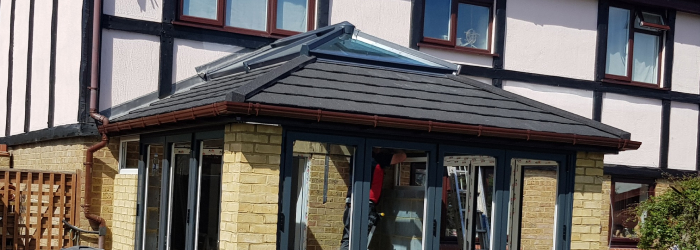
An orangery offers a luxurious and stylish alternative to the traditional conservatory. Combining the benefits of both a conservatory and an extension, an orangery is constructed with brick or stone, featuring large windows and a flat roof with a central glass lantern, offering a sophisticated yet functional space.
Key Characteristics:
- Structure: Solid walls with a mix of glass windows and a flat roof with a glazed lantern.
- Design: Blends modern and traditional architectural elements, offering a timeless aesthetic.
- Function: Perfect for creating a seamless transition between home and garden.
Advantages of Orangeries
1. Thermal Efficiency:
Thanks to their solid construction, orangeries offer excellent insulation, keeping you comfortable all year round while potentially lowering energy costs.
2. Durability:
The use of bricks or stone makes orangeries more robust and durable, ensuring they withstand the test of time.
3. Design Flexibility:
Orangeries provide more architectural features and customisation options, allowing you to tailor the design to match your home’s existing style.
4. Privacy:
The solid walls of an orangery offer more privacy compared to the glass walls of a conservatory.
5. Natural Light
One of the standout features of an orangery is the abundance of natural light it offers. The combination of large windows and a central roof lantern means your orangery will be bathed in daylight, creating a bright and welcoming space. The ILite Flat Roof Orangery System is a perfect example, featuring a sleek, modern design that maximises natural light while providing excellent thermal efficiency.
Disadvantages of Orangeries
1. Higher Cost:
Orangeries are generally more expensive than conservatories due to their construction materials and complexity, which could be a limiting factor for some homeowners. Complexity is taken away by using a prefabricated, pre-approved system.
2. Longer Installation Time:
Building an orangery requires more time and effort, potentially causing more disruption during construction. Using a prefabricated system, such as our ILite Flat Roof Orangery, reduces this as there is less install time – it can be installed in half a day!
3. Planning Permission:
Due to their more permanent nature, orangeries may require planning permission, adding an extra step to the building process. The ILite has pre-approval, saving time in this step of the process.
What is a Home Extension?
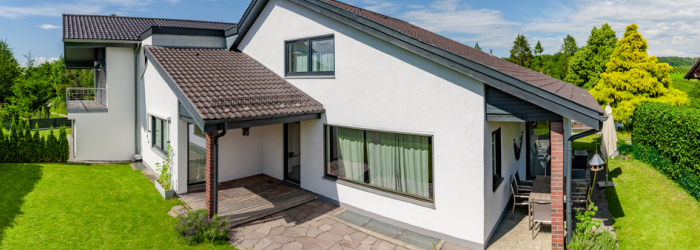
A home extension is a fully integrated addition that expands your living space, providing a seamless transition between your new and existing areas. Unlike conservatories and orangeries, extensions are constructed using materials that match the rest of the house, creating a cohesive look and feel.
Key Characteristics:
- Structure: Fully integrated with the existing building, often using similar materials for consistency.
- Design: Can be tailored to suit any need, from kitchens and living rooms to additional bedrooms or offices.
- Function: Adds substantial value and functionality to your home.
Advantages of Extensions
1. Versatility:
Extensions offer the most flexibility in terms of design and functionality, allowing you to create spaces that cater to your specific needs and preferences.
2. Added Value:
By increasing your home’s square footage, extensions significantly enhance property value, providing a worthwhile investment.
3. Year-Round Use:
Extensions offer excellent insulation and protection from the elements, ensuring comfort throughout the year.
4. Full Integration:
Extensions seamlessly blend with the existing home, maintaining architectural coherence and aesthetic appeal.
Disadvantages of Extensions
1. High Cost:
As the most complex and permanent option, extensions require a significant financial investment, which may not be feasible for everyone.
2. Complex Planning:
Extensions often require detailed architectural plans and planning permission, adding to the complexity of the project.
3. Extended Build Time:
The construction process for extensions is typically much longer, potentially causing more disruption to your daily routine.
Orangery vs Conservatory vs Extension: A Quick Comparison
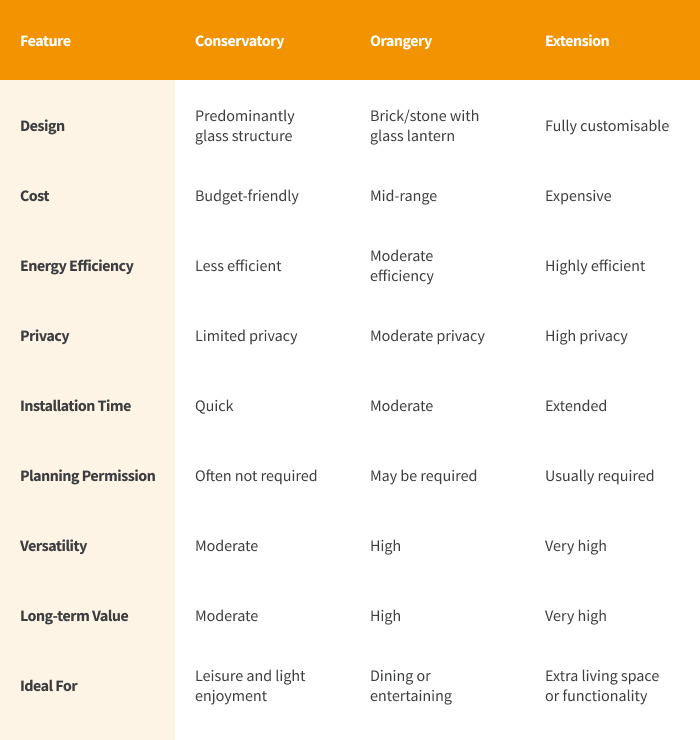
Orangery vs Conservatory vs Extension: A Detailed Comparison
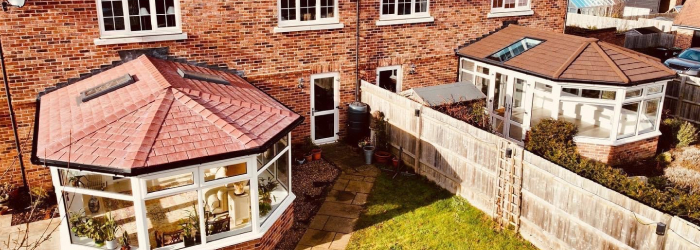
Design and Aesthetics
Orangeries, conservatories, and extensions each offer unique design elements that cater to different tastes and requirements. While conservatories are predominantly glass, offering a bright and light feel, orangeries provide a blend of elegance and modern design with their brick pillars and glass roofs. Extensions, however, allow for full customisation, matching your home’s existing architecture.
Take a look at our gallery of SupaLite installs to see the difference between a conservatory, orangery and extension.
Cost Considerations
When thinking about cost, extensions are generally the most expensive option due to their complexity and materials. Orangeries fall in the middle range, providing a balance between cost and luxury. Conservatories are often the most budget-friendly choice, making them accessible to a wider range of homeowners.
Energy Efficiency
Energy efficiency is a crucial factor for many homeowners, especially with the soaring of recent energy prices. Orangeries and extensions often provide better insulation than conservatories, leading to significant energy savings over time. That being said, choosing the right materials and design features can further enhance the energy efficiency of each option. A tiled conservatory roof can give a conservatory a u-value of 0.12 as standard, with the ability to get down to 0.12, which means your conservatory will remain at a comfortable temperature all year round.
Functionality and Usability
Extensions provide the most flexible use of space, perfect for adding a new room or expanding existing living areas. Orangeries can serve as elegant dining rooms or lounges, while conservatories are typically ideal for enjoying natural light and garden views. Consider how each option can be tailored to meet your lifestyle needs.
Planning Permission and Regulations
Understanding planning regulations is essential before embarking on any home improvement project. Extensions usually require more stringent permissions, while conservatories and orangeries often fall under permitted development rights. Planning Portal is a useful website to find the information you need.
How to Choose the Best Option for Your Home: Tips and Considerations
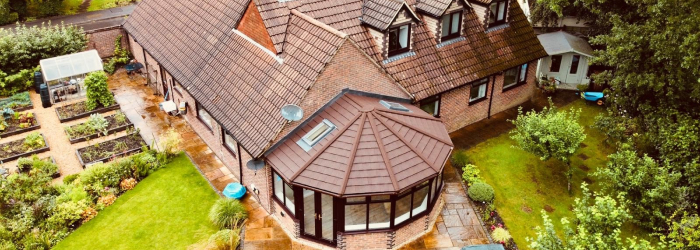
Choosing between an orangery, conservatory, or extension depends on your needs and preferences. Here are some practical tips to help you make the right decision:
Assess Your Needs and Lifestyle
Consider how you intend to use the new space and what features are most important to you. Are you looking for a bright area to enjoy the garden, or do you need a more versatile room for various activities?
Budget and Financial Planning
Establish a realistic budget that reflects your priorities. Remember that extensions may require more upfront investment but could add significant value to your home.
Consider Long-Term Value
Think about the potential return on investment and long-term benefits of each option. Orangeries and extensions often enhance home value the most, while conservatories might provide more immediate enjoyment.
Evaluate Local Climate and Environment
When choosing between an orangery, conservatory, or extension, it’s essential to consider your local climate. Extensions offer excellent insulation for colder climates, making them ideal for maintaining warmth year-round. Meanwhile, traditional orangeries and conservatories suit milder regions due to their design.
However, the UK’s temperate climate means that, with the right technology, such as an insulated roof, you can enjoy your new space regardless of the weather.
How SupaLite Enhances Your Orangery, Conservatory, or Extension
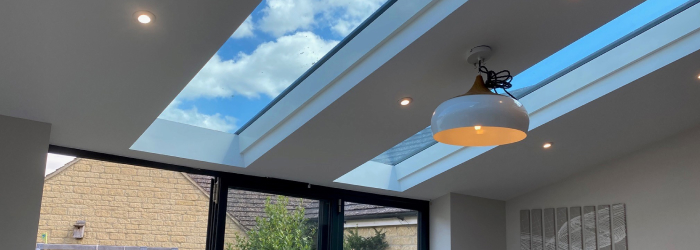
SupaLite offers innovative roofing solutions that enhance the functionality and aesthetics of your orangery, conservatory, or extension. Our products are designed to provide superior insulation, energy efficiency, and style, ensuring your home improvement project is a success, no matter which option you choose.
All of our roofs for conservatories, orangeries and extensions provide:
- Insulation: Keep your space comfortable year-round with SupaLite’s advanced roofing systems.
- Energy Savings: Our products help reduce energy costs by improving thermal efficiency.
- Customisation: Choose from a range of styles and finishes to complement your home’s design.
Explore SupaLite’s range of solutions in our blog Which SupaLite Product Is Right For Me? Or contact us for an expert consultation to see how we can transform your home.
Real-Life Transformations: Orangeries, Conservatories, and Extensions
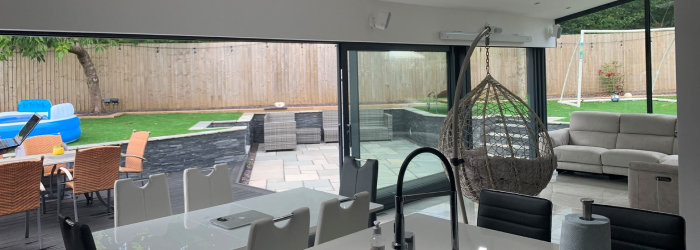
Discover how SupaLite has transformed homes with our innovative products. From stylish orangeries to functional extensions, our case studies highlight the impact of quality home improvements.
- Orangery Inspiration: See some of our real-life transformations.
- Conservatory Transformation: Explore a conservatory that was turned into a year-round entertainment room with our roofing solutions.
- Extension Case Study: Learn how an extension added valuable living space and increased property value.
Quick Comparison Table
Now that you understand the differences between orangeries, conservatories, and extensions, here’s a quick comparison table to help you review the features and benefits of each option.

Choosing between an orangery, conservatory, or extension is a significant decision that can enhance your home’s comfort, functionality, and value. Each option offers unique benefits and features, catering to different preferences and needs.
Ultimately, the right choice depends on your lifestyle and priorities. Whether you seek a serene retreat, an elegant dining area, or extra living space, an orangery, conservatory, or extension can transform your home into a more inviting and functional environment. By investing in a well-planned addition, you not only improve your living conditions but also increase your property’s value and appeal.
For expert advice and innovative solutions tailored to your needs, consider SupaLite’s range of products. Our team is here to help you create the perfect space that complements your home and enhances your lifestyle.
Articles you may also find interesting:
Conservatory vs Extension – which should you choose for your home?

